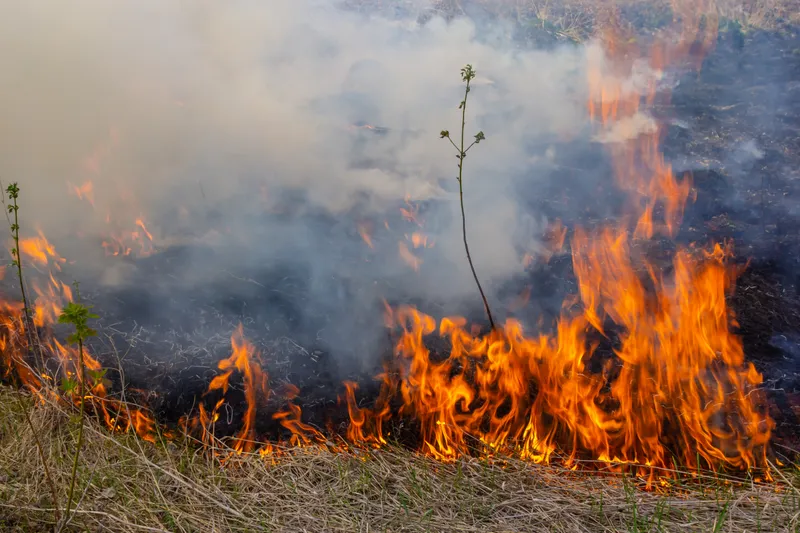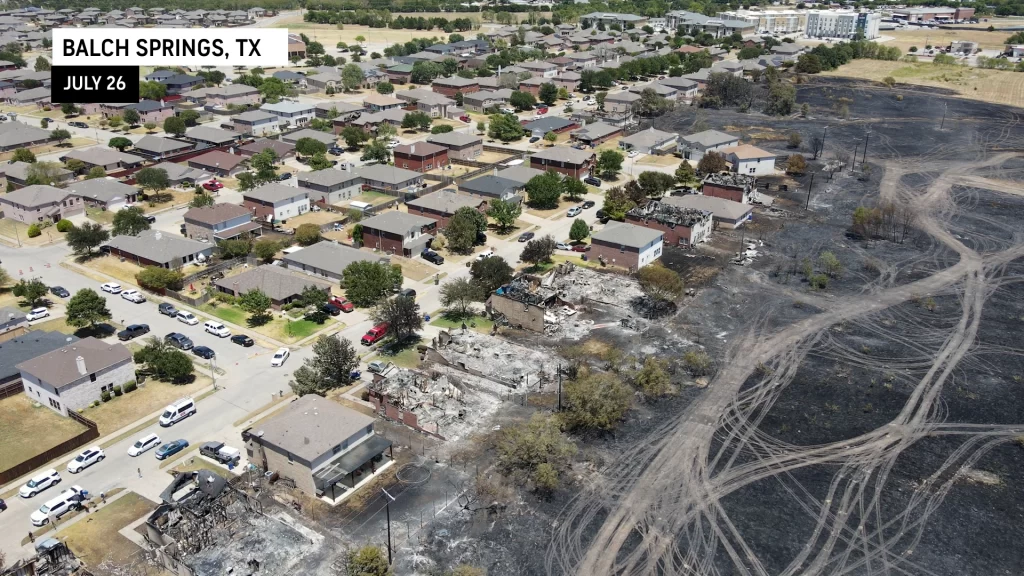Wildfires Suck!



Balch Springs, TX Wildfire
In about 40 minutes, a simple tiny grass fire in Balch Springs, TX destroyed 9 Homes and Damaged another 17 in Balch Springs, TX this year. Only the homes adjacent to the grasslands burned. Two front yards and a street acted as Defensible Space and help prevented houses from burning down. Although 17 did sustain damage.
The insurance company State Farm Lloyds is suing Sikka Investments, a Plano-based investment company that owns the property where the massive fire that destroyed several houses in Balch Springs started. By the time firefighters got things under control, a total of 26 houses were affected by fire, smoke, or water damage. Of the 26, nine were completely destroyed. Now State Farm Lloyds filed a personal injury lawsuit against Sikka Investments on behalf of three homeowners affected by the blaze, Edgar Cruz, Mario Thompson and Miguel Quinonez, asking for the company to pay more than 1 million dollars in damages, along with interest and court and attorney fees.
Jeffco Dspace 6.302 (CSU)
Creating Wildfire Defensible Space
Two factors have emerged as the primary determinants of a home’s ability to survive wildfire. These are the home’s roofing material and the quality of the “defensible space” surrounding it.
Use fire-resistive materials (Class C or better rating), not wood or shake shingles, to roof homes in or near forests and grasslands. When your roof needs significant repairs or replacement, do so with a fire-resistant roofing material. Check with your county building department. Some counties now restrict wood roofs or require specific classifications of roofing material.
Defensible space is an area around a structure where fuels and vegetation are treated, cleared or reduced to slow the spread of wildfire towards the structure. It also reduces the chance of a structure fire moving from the building to the surrounding forest. Defensible space provides room for firefighters to do their jobs. Your house is more likely to withstand a wildfire if grasses, brush, trees and other common forest fuels are managed to reduce a fire’s intensity.
The measure of fuel hazard refers to its continuity, both horizontal (across the ground) and vertical (from the ground up into the vegetation crown). Fuels with a high degree of both vertical and horizontal continuity are the most hazardous, particularly when they occur on slopes. Heavier fuels (brush and trees) are more hazardous (i.e. produce a more intense fire) than light fuels such as grass.
Mitigation of wildfire hazards focuses on breaking up the continuity of horizontal and vertical fuels. Additional distance between fuels is required on slopes.
% slope | Tree Crown Spacing | Brush and Shrub Clump Spacing |
0 -10 % | 10 ́ | 2 1/2 x shrub height |
11 – 20% | 15 ́ | 3 x shrub height |
21 – 40% | 20 ́ | 4 x shrub height |
> 40% | 30 ́ | 6 x shrub height |
Stonebridge at Eagle Ridge Wildfire Information
TBD
Understanding the Grassfire Risk
From The Brush Fire Foundation Org
- Grassfires can start and spread quickly and are extremely dangerous.
- Grassfires can travel up to 25 km per hour and pulse even faster over short distances.
- Grass is a fine fuel and burns faster than bush or forests.
- Grassfires tend to be less intense and produce fewer embers than bushfires, but still generate enormous amounts of radiant heat.
- The taller and drier the grass, the more intensely it will burn.
- The shorter the grass, the lower the flame height and the easier the fire will be to control.
- Short grass (under 10cm) is a much lower risk.
- Grassfires can start earlier in the day than bushfires, because grass dries out more quickly when temperatures are high.
- Living in a grassland area with dried-out brown or golden-coloured grass that is over 10cm high is a fire risk. There are some exceptions, such as Phalaris grass, which will burn even when green.
Wildfire Information outside of Stonebridge
Lorem ipsum dolor sit amet, consectetur adipiscing elit. Ut elit tellus, luctus nec ullamcorper mattis, pulvinar dapibus leo.